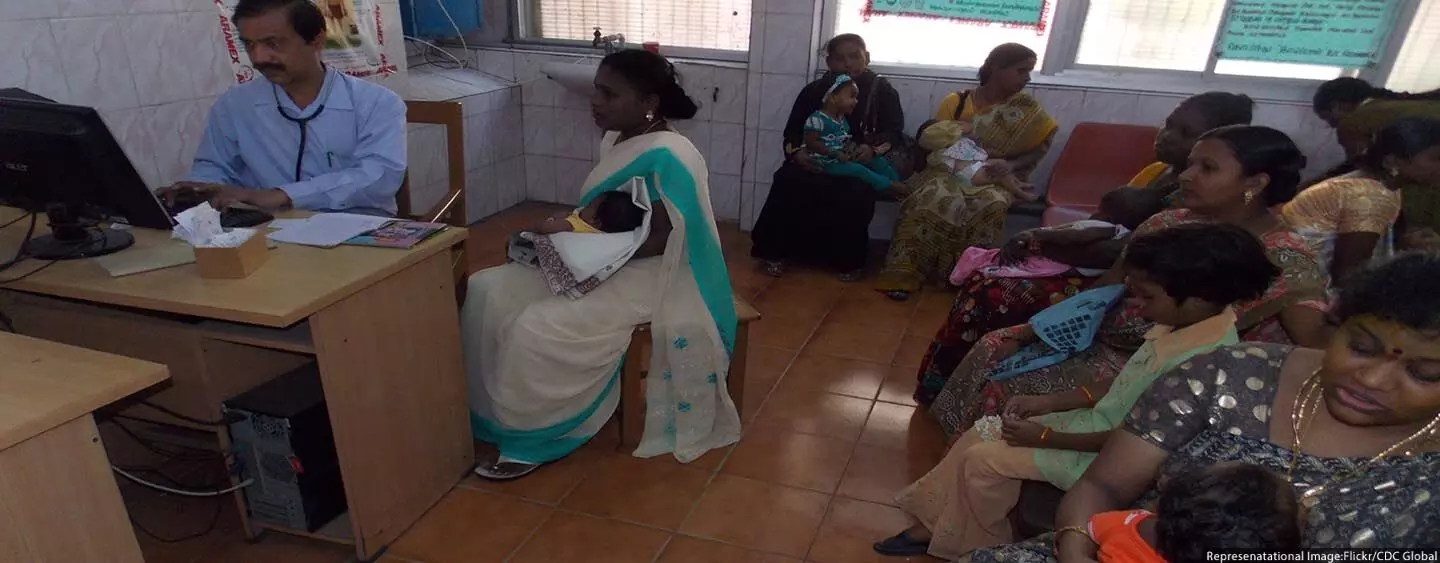India’s Child Deaths From Diarrhoea Down 52% In Decade, But Pakistan, Bangladesh Do Better On Solutions

New Delhi: In a decade to 2015, India’s efforts to tackle diarrhoea--a disease easily preventable through sanitation, safe drinking water and hygiene--have led to a 52% fall in deaths of children below the age of four, but the prevalence of diarrhoea, at 9.2%, has remained high, according to national health data.
The decline in deaths was driven by improved treatment cover even as fewer affected children were given increased diet and fluids--vital to fight diarrhoea--data from the National Family Health Survey 2015-16 (NFHS-4), show.
Despite the improvement in mortality, diarrhoea remained among the leading causes of death in Indian children below the age of five, killing an estimated 321 children every day in 2015, according to data from the World Health Organization (WHO).
Diarrhoea, which results in dehydration--is also a leading cause of malnutrition globally. In 2016, India ranked 114 of 132 nations on stunting (low height for age).
In 2015, deaths from diarrhoea in Indian children under five accounted for 10% (117,285) of all deaths in the age-group, higher than 7% (3,273 children) in Myanmar, 7% (5,442 children) in Kenya and 9% (39,484 children) in Pakistan--countries with lower per capita incomes--as IndiaSpend reported on July 29, 2017.
Between 2000-2012, India’s under-five mortality declined by an average of 3.7% annually, according to this September 2013 study published in the Lancet. “Even though the deaths among children under five years have declined, the proportional mortality accounted by diarrheal diseases still remains high,” said this 2015 paper referring to the Lancet study.
More affected children received rehydration therapy
This reduction in deaths, as we said, was driven by the inception and success of many programmes for immunization, and control of diarrhoeal diseases through promotion of oral rehydration salts (ORS), improving breastfeeding practices and institutional births, explains the Lancet study quoted above.
India has adopted the Integrated Action Plan for Prevention and Control of Pneumonia and Diarrhoea (IAPPD) in 2014 to address the gaps.
Besides strengthening existing approaches, IAPPD aims to achieve higher coverage of interventions including appropriate infant and young child feeding, provision of safe drinking water and improved sanitation, Vitamin A supplementation, measles vaccination, Hib vaccination to prevent pneumonia and meningitis, hand washing and personal hygiene and provision of ORS, zinc.
ORS is a mixture of clean water, salt and sugar which is absorbed in the small intestine and replaces the water and electrolytes lost through faeces. Zinc supplements reduce the duration of a diarrhoea episode by 25%, and are associated with a 30% reduction in stool volume, according to the WHO.
In 2015-16, 60% children with diarrhoea received some form of oral rehydration--through ORS packets (51%) or gruel (28%) or increased fluids (7%)--up from 43% in 2005-06, NFHS-4 data show.
The proportion of children with diarrhoea who received rehydration therapy from ORS packets increased from 26% in 2005-06 to 51% in 2015-16. Yet, India did worse than neighbours Pakistan and Bangladesh in providing ORS and zinc tablets to children, as IndiaSpend reported on November 18, 2016.
No more than 38% of children with diarrhoea received continued feeding and oral rehydration, as recommended, according to the report.
In 2015-16, advice or treatment was sought from a health facility or provider for 68% of children with diarrhoea, up from 60% a decade ago.
More than 90% of treatments for childhood diarrhoea are incorrect, as IndiaSpend reported on February 18, 2015. Largely unqualified medical practitioners, unfamiliar with relatively simple life-saving medications, prescribe antibiotics and other potentially harmful drugs, the report said.
Sanitation gaps keep prevalence of diarrhoea high
In 2015-16, 9.2% Indian children below the age of five had diarrhoea--up from 9% in 2005-06, according to NFHS-4 data.
The prevalence fell 2 percentage points among children aged 6-11 months, “when complementary foods and other liquids are introduced”, while it fell 0.8 percentage points among children aged 12-23 months, “when children begin to walk and are at increased risk of contamination from the environment”.
Improved sanitation is a key measure to prevent diarrhoea, according to this May 2017 WHO factsheet.
In 2015-16, states that had low usage of sanitation facilities such as Jharkhand, where 24% of households used improved sanitation facilities, Bihar (25%) and Odisha (29%), also had high proportion of children under five who suffered from diarrhoea--7%, 10%, and 10%, respectively--according to data from NFHS-4, as IndiaSpend reported on July 29, 2017.
Improved sanitation refers to a household with its own toilet, connected to a piped sewer system or flush to septic tank, flush to pit latrine, ventilated improved pit/biogas latrine, pit latrine with slab, twin pit/composting toilet, which is not shared with any other household.
As of March 20, 2018, individual household toilets were constructed in 52.16% of the targeted 12 million rural Indian households under the ministry of drinking water and sanitation’s Swachh Bharat Abhiyan (Grameen), data show.
Fewer children received recommended diet, liquids during a diarrhoea episode
In 2015-16, only 7% of Indian children under five years with diarrhoea were given more liquids than usual, as recommended by WHO--down from 10.2% in 2005-06, NFHS-4 data show.
While 31% children received the usual amount of liquids, 57% children with diarrhoea were given less to drink--up from 37% a decade ago.
“To reduce dehydration and minimise the effects of diarrhoea on nutritional status, mothers are encouraged to continue normal feeding of children with diarrhoea and to increase the amount of fluids,” the NFHS-4 report said.
In 2015-16, only 31% Indian children with diarrhoea were fed according to the recommended practice of giving the same or more food to the sick child--down from 39.4% in 2005-06.
In comparison, 56% sick children were given less food than usual during an episode of diarrhoea--up from 41.8% a decade ago.
(Tripathi is a principal correspondent with IndiaSpend)
We welcome feedback. Please write to respond@www.health-check.in. We reserve the right to edit responses for language and grammar.


